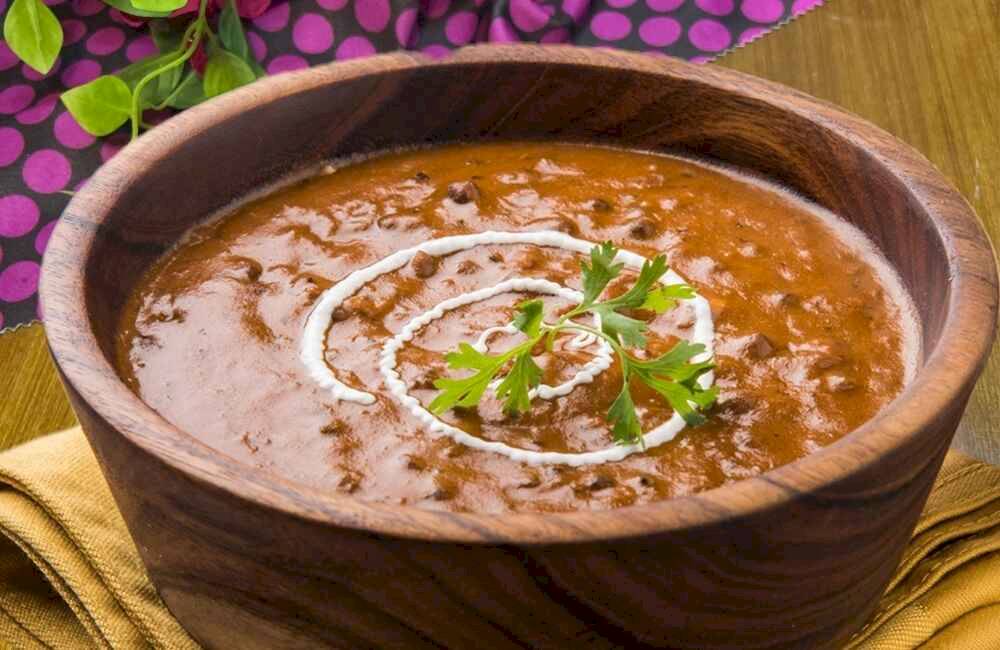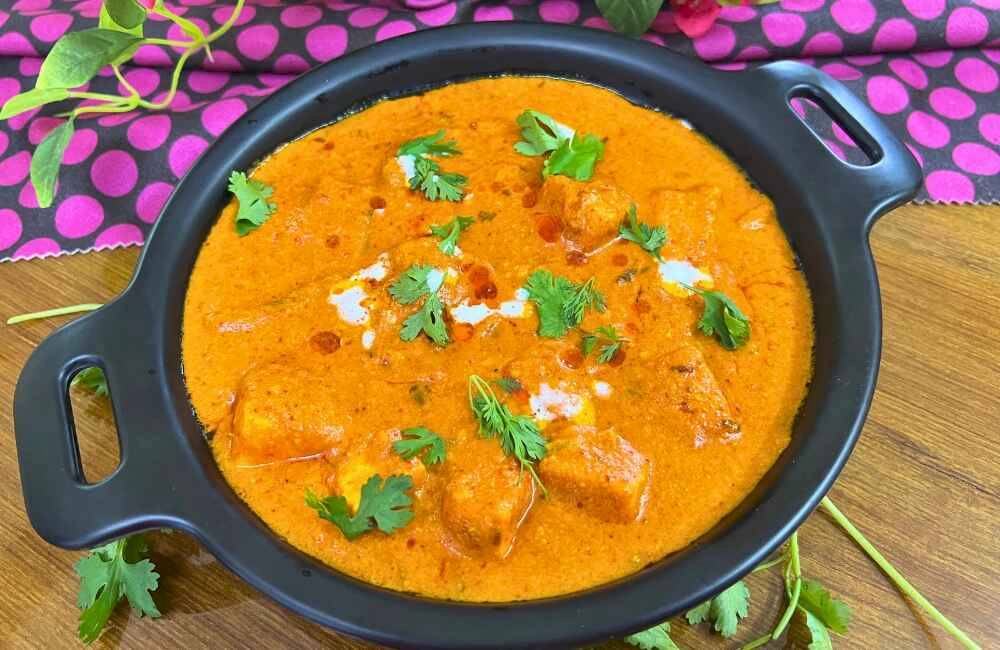Egg Lababdar: A Flavorful North Indian Egg Curry Recipe

Egg Lababdar: A Flavorful North Indian Egg Curry Recipe
If you're a fan of creamy, spicy curries and love eggs, you're in for a treat! Today, we’re diving into a rich, aromatic, and flavorful North Indian egg curry called “Egg Lababdar”. Eggs are simmered in a luscious tomato-based gravy, infused with fragrant spices, and topped off with fresh herbs. This dish is comforting and packed with layers of flavors that make it a perfect side dish for chapati, roti, or rice. Whether you're a seasoned cook or a beginner, this easy-to-follow recipe will help you bring this delightful dish to life in your kitchen.
Recipe Details
PREP TIME
COOK TIME
TOTAL TIME
COURSE
CUSINE
SERVING
Ingredients
- 4 medium-sized tomatoes, roughly chopped
- 20 cashew nuts (soaked for 15 minutes)
- 4 tbsp oil
- 1 bay leaf
- 1 small cinnamon stick
- 2 green cardamoms
- 3-4 cloves
- 1 tsp cumin seeds
- 2 large onions, finely chopped
- 1 tsp fresh ginger-garlic paste
- 1/4 tsp turmeric powder
- 2 tsp Kashmiri red chili powder (for a vibrant color and mild heat)
- 1 tsp cumin powder
- 2 tsp coriander powder
- 1 tsp salt (or to taste)
- 4 green chilies, slit lengthwise
- 1 tsp garam masala powder
- 1 tsp sugar
- A handful of curry leaves (optional, for additional flavor)
- Fresh coriander leaves, finely chopped
- 4-5 eggs (depending on preference)
- 1 cup water (to adjust the gravy consistency)
How to Make Egg Lababdar: A Flavorful North Indian Egg Curry Recipe
Take 4 medium-sized tomatoes, roughly chopped, and place them in a mixer jar. Add 20 soaked cashew nuts (soaked for about 15 minutes to soften them). Blend the tomatoes and cashew nuts together to form a smooth, fine puree. Once the puree is ready, transfer it to a bowl and set it aside for later use.
Heat 4 tablespoons of oil in a wide pan (preferably a deep, thick-bottomed pan or a wok/kadai). Add 1 bay leaf, 1 small cinnamon stick, 2 green cardamoms, and 3-4 cloves. Also, add 1 teaspoon of cumin seeds to the hot oil. Sauté the spices until they release a lovely aroma. This step is crucial as it forms the fragrant base of the curry.
Add 2 large onions, finely chopped, once the spices are fragrant. Make sure the onions are finely chopped to help them blend seamlessly into the gravy.
Sauté the onions until they turn a beautiful golden brown, which should take around 5-7 minutes on medium heat. Stir occasionally to avoid burning. Add 1 teaspoon of fresh ginger-garlic paste to the pan. Stir it into the onions and sauté for another 1-2 minutes until the raw smell of ginger and garlic disappears.
Now, add the prepared tomato and cashew puree to the pan. Stir everything well to combine. Cook this mixture on medium heat until the oil begins to separate from the tomato puree and the moisture evaporates. This step can take around 8-10 minutes, so be patient. Cooking the tomato puree well is essential to remove its raw flavor.
To make sure you don’t waste any puree, add a little water to the mixer jar, swirl it around, and pour it into the pan. This adds extra flavor and ensures nothing is wasted. After the tomato-cashew mixture has thickened and the oil has separated, it's time to add the spice powders.
Add 1/4 teaspoon turmeric powder, 2 teaspoons Kashmiri red chili powder (for its bright color and mild heat), 1 teaspoon cumin powder, and 2 teaspoons coriander powder.
Season with 1 teaspoon of salt (or to taste). Stir everything thoroughly to ensure the spices are well combined with the masala. You’ll notice the masala thickening and taking on a deep, rich color.
Add 1 cup of water to the pan to bring the masala to a gravy-like consistency. You can add more or less water depending on how thick or thin you prefer the gravy.
Add 4 green chilies, slit lengthwise, for an extra kick of heat. Sprinkle in 1 teaspoon of garam masala powder for a warm, earthy flavor and 1 teaspoon of sugar to balance the spiciness of the curry. Stir the mixture well and bring it to a gentle simmer. Cover the pan with a lid and let the curry cook for about 5 minutes.
Crush a few curry leaves and toss them into the curry. This step is optional, but it adds a lovely layer of aroma. Also, sprinkle a handful of finely chopped coriander leaves into the gravy. Stir everything together and let it simmer for another 2-3 minutes. By now, your kitchen should be filled with the inviting fragrance of the curry.
Remove the bay leaf from the curry to ensure it doesn’t get in the way while adding the eggs. There are two ways to add the eggs to the curry:
You can boil the eggs separately, peel them, and add them to the curry. Cracked Eggs: Alternatively, you can crack raw eggs directly into the simmering curry, which will poach them in the gravy. This method is a popular choice as the eggs absorb the flavours of the curry.
If you’re cracking the eggs into the curry, make sure to create small gaps in the gravy and carefully drop each egg in without disturbing them too much.
Lower the heat to a gentle simmer, cover the pan with a lid, and let the eggs cook for about 4-5 minutes. This allows the eggs to poach perfectly in the flavorful curry. After 5 minutes, check on the curry. The eggs should be cooked perfectly, and the oil will have separated from the gravy, indicating that it’s ready.
Garnish with a final sprinkle of fresh coriander leaves before serving. Serve this delightful “Egg Lababdar” with hot chapatis, rotis, or even with steamed rice or mild pulao. The creamy, spicy gravy combined with the richness of the eggs makes for a comforting meal.
Related Recipes
Baingan ka Bharta Recipe in hindi
Dal Makhani Recipe in Hindi
Paneer Lababdar Recipe in Hindi
Chat with us
Categories
- Breakfast
- Lunch/Dinner
- Side Dish
- Rice
- Chicken
- Non - Veg
- Vegetable
- Drinks
- Desserts
- DIY
Large modal
Large modal
Modal title
Create An Account
Verify Mobile!
Please enter OTP code we sent via SMS:
Login Verify Mobile!
Please enter OTP code we sent via SMS:

















